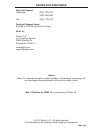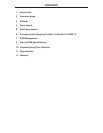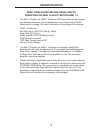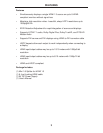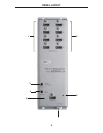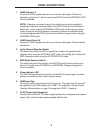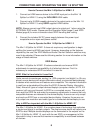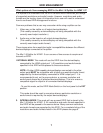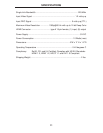
7
EDID MANAGEMENT
What options do I have managing EDID in the Mini 1:8 Splitter for HDMI 1.3?
It is important to understand that the EDID contains much more than just listings
of supported resolutions and audio formats. However, resolutions and audio
formats are the two key types of information that a user will need to understand
how to use these EDID management functions.
Common problems that a user may encounter while using a splitter can be:
1. Video may not be visible on all output devices/displays.
(This usually caused by a device/display not being compatible with the
currently used output resolution.)
2. Audio may not be heard on all output devices/displays.
(This usually caused by a device/display not being compatible with the
currently used output audio format.)
These issues arise from resolution/audio incompatibilities between the different
devices/displays connected to the splitter.
The Mini 1:8 Splitter for HDMI 1.3 can use one of two sources to acquire and
transmit an EDID.
EXTERNAL MODE: This mode will use the EDID from the device/display
connected to the HDMI output port 1. All resolutions and audio formats
specifi ed in this EDID will be passed to the source device.
NOTE: All other HDMI capable devices/displays connected to the other
output ports MUST be compatible with at least one resolution/audio format
supported by the device/display connected to HDMI output port 1. It is
recommended to set, on the source device, a common resolution and
audio format shared by all attached devices/displays. This is to ensure a
compatible signal is output to all connected devices/displays.
- To use this mode, set the EDID Mode Switch on the front panel to the EXT
position.
This mode should be used in scenarios where a particular resolution or
audio format is required by the output devices/displays.
3. INTERNAL MODE: This mode will use a preset EDID that is stored in the
Mini 1:8 Splitter for HDMI 1.3. All resolutions and audio formats specifi ed in
this EDID will be passed to the source device. Many common resolutions
and audio formats are supported by this EDID. For a complete listing of the
resolutions and audio formats listed in this EDID please see page 9.



